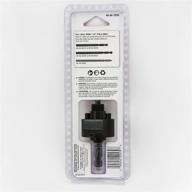Okay, I know that most users probably don't care that the two-pin locking mechanism is always loose on the shaft. It features a ball bearing spring that allows the engagement pins to raise and lower, allowing you to screw in the sleeve before the pins engage. However, the pins, threads and timing for the engagement pins provide the required clearances. an inaccurate procedure and not reliable enough not to stagger during the procedure. The threads break too. I'd rather have a simple lock nut…


